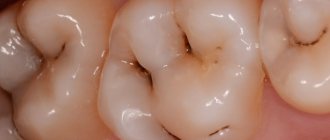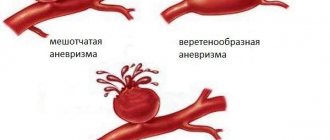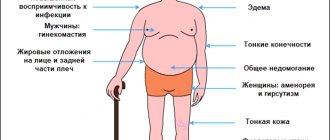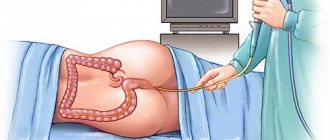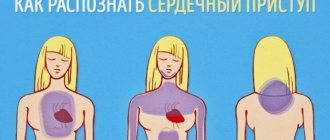The term “angina” comes from the Latin word ango (squeeze, soul), which describes part of the sensations associated with this disease. Indeed, enlargement of the tonsils, their swelling, accompanied by severe pain in the throat, can be perceived as “squeezing.” Other sharp and severe symptoms of tonsillitis are severe weakness, manifestations of intoxication (body aches), high (more than 38 degrees) temperature, sharp pain when swallowing. There is a significant increase in lymph nodes. But not all problematic conditions of the body associated with throat diseases are diagnosed as sore throat or acute tonsillitis. It is the term “tonsillitis” that more accurately describes the disease.
The photo on the side shows a molecular model of the virus.
Main classification
There are many classifications by which tonsillitis is determined. There are classifications officially recognized by medical practice, and there are spontaneous ones.
The most famous and frequently used structuring is the classification of B.S. Preobrazhensky, based on pharyngoscopic manifestations. Those. It is considered which part of the tonsils is affected by the pathogen, and how intense the inflammatory process is.
According to this classification, the following sore throats are distinguished:
- catarrhal,
- follicular,
- lacunar,
- phlegmonous (peritonsillitis, intratonsillar abscess),
- ulcerative-membranous (ulcerative-necrotic, Simanovsky-Plaut-Vincent angina),
- herpetic,
- mixed.
The most widespread, according to medical statistics, are the first 3 types. At least 70% of sore throats in domestic otolaryngological practice are due to these forms of tonsillitis.
How is diagnosis done?
During the appointment, the doctor will need to collect anamnesis and analyze the patient’s complaints. After this, the doctor conducts a visual examination of the throat and palpates the neck. If necessary, take a swab from the mouth and throat. In this case, the doctor examines the areas:
- tonsils;
- gums;
- walls of the oral cavity;
- epithelium of the soft palate.
Already on the basis of such an examination, the presence of an inflammatory process can be established. Gland lacunae may contain white purulent deposits. If you press on the tonsil, pus flows into the oral cavity. If pus enters the bloodstream, the patient runs the risk of blood poisoning.
Additionally, you will need to donate blood and urine. The last diagnostic step before confirming a sore throat is a nasal swab. It is necessary to exclude diphtheria.
Catarrhal form
Catarrhal tonsillitis is characterized by damage to only the uppermost layer of the tonsil mucosa (capsule). A typical picture of such a sore throat: severe hyperemia of the tonsils (possibly involving the uvula, arches, and back wall of the throat in inflammation), pain when swallowing, low-grade fever and general malaise.
Typical picture in the pharynx with catarrhal tonsillitis.
Catarrhal tonsillitis is not characterized by the formation of purulent exudate (regardless of the nature of the pathogen), but the surface of the tongue in most cases is covered with a whitish or grayish coating. In the general blood test, slight nonspecific changes are noted (increased leukocytes/lymphocytes, increased ESR).
In children under 13 years of age, the catarrhal form can be more severe with an increase in temperature to febrile levels (up to 39 degrees). Also, in childhood, catarrhal tonsillitis, even with a slight delay in treatment or a weakened immune system, has a 50/50 chance of developing into the next most severe form. With adequate treatment, recovery occurs on the sixth day from the onset of symptoms.
Causes of the disease
According to scientific data, strep throat is most often caused by streptococcus. Staphylococcus is in second place. It is typical that an infection of this kind can affect not only the throat. From there, along with the blood, it spreads throughout the body. This, in turn, provokes the destruction of many internal organs, which should not be allowed.
If the immune system is weakened, the likelihood of rapid development of pathology and complications increases several times. The following factors can suppress immune defense:
- seasonal changes in humidity and air temperature;
- excess protein;
- presence of chronic diseases;
- vitamin deficiency (seasonal or after an illness);
- insufficient development of the tonsils (hereditary or acquired).
If a sore throat is not treated in time, it becomes chronic. In addition to this, the patient will receive a whole “bouquet” of other pathologies: arthritis, nephritis, bronchitis. The severity of such complications depends on how far the infection has spread throughout the body.
To make an accurate diagnosis in medicine, it is customary to distinguish classifications of angina:
- according to the severity of the current;
- because of;
- by localization of inflammation.
Based on the source of the problem, you should decide where to start treatment and what it should be. Only in this case it is possible to get rid of a sore throat and prevent its recurrence.
Follicular form
Follicular tonsillitis means that the pathogen has penetrated deeper, forming many foci in the follicles - small nodules of lymphoid tissue that abound in the entire structure of the tonsil. Like other basic forms, this one is easily recognizable and does not cause problems in diagnosis. Here the disease begins with a sharp increase in temperature to febrile and pyretic (above 39 degrees) values and an equally sharp and severe pain in the throat, which can be recorded even outside of swallowing movements (due to the abundant innervation of the tonsils).
Typical picture in the pharynx with follicular tonsillitis.
Content may be difficult to view
In children, it is almost guaranteed that on the very first day of illness there will be signs of general intoxication: chest pain, arthralgia, nausea, diarrhea. In adults, such symptoms are rarely expressed. The marker symptom of this form of tonsillitis is pinpoint abscesses on the palatine tonsils, which can be noticed after 2 days from the onset of the disease. It is important that in the case of follicular sore throat, purulent inclusions may not be on the surface itself, but a little deeper. Therefore, eliminating purulent discharge with the same rinsing is more problematic.
Eliminate temperature
Having dealt with the symptoms of the disease, you can move on to the topic of treatment. Many sick people, faced with unpleasant signs of the disease, immediately ask themselves the question: how many days does the temperature last with sore throat? Approximately 3-4 days.
Everyone knows how much life is complicated and worsened by elevated temperatures. Therefore, it needs to be shot down as soon as possible. As a rule, for this purpose, the doctor prescribes one of four drugs:
- "Ibuprofen." An antipyretic that also helps fight inflammation. It is allowed to combine it with other antibacterial drugs. It is absorbed into the blood quickly, and therefore the temperature begins to decrease within an hour after use.
- "Panadol". Even more powerful than Ibuprofen, because its effect is enhanced by other substances included in the composition.
- "Nurofen". In general, they take it up to 4 times a day, and the total dose does not exceed 200 milligrams. However, this remedy is not as effective as the previous two, and therefore doctors allow dosage to be doubled in the first two days.
- "Aspirin". This is a universal remedy based on salicylic acid, which additionally has an analgesic effect.
Also, at the first signs of a sore throat, Teraflu, Ibuklin, Rinza and Tylenol can help relieve fever.
Lacunar form
Lacunar tonsillitis is similar in general features to the follicular form. Sometimes a mixed lacunar-follicular form even occurs, or one transforms into the other. The main difference between the lacunar form is that the inflammatory process, the absorption of pathogenic bacteria by macrophages and “acquaintance” with a foreign antigen occurs in the lacunae. These are deep canals that streak the surface of the tonsils along the length. Their number varies from 10 to 20 among different people.
Typical picture in the pharynx with lacunar tonsillitis.
Content may be difficult to view
The lacunar form is often due to the fact that in the crypts (the deepest zones of the lacunae) a certain amount of pathogenic microflora remains for a long time. And when the immune system is undermined, active proliferation of bacteria begins. This type of sore throat is easily recognized by the branched purulent pattern on the surface of the tonsils; it follows the lines of the lacunae. Often pus extends beyond the lacunae, enveloping the tonsils entirely. In this case, the exudate can be easily removed with a spatula or rinsing without damaging the mucous membrane.
Spreading
The variety of types of pathogens that cause inflammation of the tonsils in acute tonsillitis explains the large number of ways in which the disease is transmitted from a sick person to a healthy one. In some, although not very frequent, cases, you can get a sore throat not even from the patient, but from the so-called “carrier of the infection.”
One of the most common routes of infection transmission is airborne droplets.
Airborne
The process of infection by pathogenic microorganisms occurs when they enter a humid environment. The sputum and saliva of a person with tonsillitis are ideal conditions for the preservation and reproduction of pathogens. When you sneeze and cough, droplets of moisture saturated with clusters of microbes are released into the environment. For some time, in the form of a kind of aerosol, they remain in the air or fall on objects, clothing or human skin. And then, together with the air, they penetrate the nasopharyngeal mucosa of still healthy people. It should be noted that in most cases, the airborne transmission of infection “works” if a healthy person is at a relatively short distance from the sick person.
Nutritional
So you can get a sore throat if you eat food contaminated with bacteria . The causative agent of sore throat spreads easily. If a situation arises where it is necessary to live or be in the same room with a person who has a sore throat, all products must be thoroughly cleaned.
It is especially dangerous if pathogens get into milk. It creates extremely favorable conditions for the proliferation of microorganisms and the formation of toxins.
It is easy to become infected with a sore throat through dishes, towels and other household items used by a sick person.
There are also less common possibilities for contracting strep throat.
Oral-fecal
In this case, a large number of pathogens are localized in the intestines and are excreted either in urine or feces, or in vomit. The infection can enter the body of a healthy person through the mouth if water or food products are contaminated. One of the common ways of infection is through dirty hands.
Autoinfection
Even a healthy person has a large number of bacteria in the tonsil area, which the defense system can easily cope with. If for some reason the immune system weakens, harmful microbes quickly become active, which causes acute tonsillitis (tonsillitis). Most often, autoinfection is observed in the case of chronic diseases. In this case, during exacerbation of chronic tonsillitis.
Phlegmonous form
After these 3 types, phlegmonous tonsillitis comes next. It is logical, given that intratonsillar abscess almost always develops as a complication of follicular/lacunar tonsillitis, when the pathology remains incompletely cured and becomes chronically recurrent.
During the first 24 hours, the pathology resembles a common vulgar sore throat: a sharp rise in temperature, a sharp sore throat, signs of general intoxication, hyperemia of the tonsils, etc. But already on the second day, you can see a bulge on the side of one of the palatine tonsils (always always one!), which will grow in the coming days. This is an abscess (phlegmon) - a cavity in the tonsil tissue filled with purulent exudate and remnants of molten parenchyma. Sometimes this bump becomes so large that it completely blocks the throat, making breathing very difficult and making swallowing impossible.
Abscess due to paratonsillitis.
Content may be difficult to view
The period of maturation of an abscess usually takes from 2 days to a week, depending on the intensity of bacterial death and tissue melting (and this directly depends on the reactivity of the immune system). While the phlegmon is maturing, the patient’s condition can be very serious. Especially for a child: the temperature does not drop below 38 degrees and is difficult to control, constant thirst and problems with quenching it, tachycardia, insomnia, severe pain in the throat (and, possibly, in other areas of the body - metatonsillar manifestations). In rare cases, paratonsillitis goes away on its own - the abscess spontaneously resolves at the beginning of maturation. But this is an exception.
As it is, the only treatment option for the phlegmonous form is surgery. Even if the phlegmon has opened on its own, it is necessary to push the edges of the wound apart with a forceps and rinse off any remaining pus. Otherwise, there is a high risk of developing a new abscess. In most cases, the abscess is either punctured, excised, or bluntly opened with a forceps. When a puncture occurs, the pus is sucked out into a syringe, and when there is a cut/rupture, it is simply allowed to flow out by tilting the patient’s head forward. After the phlegmon resolves, the patient's condition noticeably improves within a matter of minutes.
If all the previous forms of angina considered are successfully treated with conservative therapy, then for the phlegmonous form the main therapy is only surgical. And the conservative part is used already at the recovery stage. Also, catarrhal, lacunar and follicular tonsillitis do not pose a threat to life, although they can cause chronic complications (autoimmune rheumatism, myocarditis). But an abscess can pose a real threat to life. This is due to the fact that purulent masses can begin to penetrate into other areas - the sternum, cervical region, bronchi.
Another difference is that treatment of such a sore throat is highly recommended in a hospital setting, even for adults, not to mention children.
Sprays
The pain when swallowing that accompanies a sore throat is often unbearable. It can be eliminated by including sprays in the therapy complex. As a rule, doctors prescribe the following drugs:
- "Hexoral". It has an antiseptic, analgesic, antifungal effect. It also produces a slight enveloping and hemostatic effect. Valid for up to 12 hours.
- "Yox." It contains povidone-iodine and allantoin, thanks to which the spray has an anti-inflammatory and antiseptic effect. The product is active against fungi, bacteria and protozoan viruses.
- "Maxicold Lore". A very popular analogue of Hexoral on the domestic market.
- "Novosept Forte". Its main active ingredient is cetylpyridinium chloride, which is very active against gram-positive bacteria.
- "Septolete Plus". Instantly relieves pain when swallowing, as it has an anesthetic effect.
- "Theraflu Lar". It also has an antiseptic and anesthetic effect.
Any spray for sore throat must be used in accordance with the instructions. If you use it every 15 minutes, as some patients do, wanting to quickly get rid of unpleasant symptoms, then you can only harm the body and even provoke addiction.
Ulcerative-membranous form
The ulcerative-membranous form (Simanovsky-Plaut-Vincent) develops due to the activation of opportunistic microflora of the oral cavity with any suppression of the immune system. The disease is caused by a symbiosis of the spirochete Spirochaeta buccalis and the fusiform bacillus Fusobacterium fusiformis. This type of sore throat occurs relatively mildly with vague symptoms: low-grade fever, moderate hyperemia of the tonsils. A symptom indicating this form is pale gray or yellowish films on the tonsils, which are easily removed with a spatula.
Under the films, small grayish erosions are observed, which soon heal without leaving marks. Usually, only local treatment is sufficient: lubricating erosions with a mixture of 10% novarsenol and glycerin solution, 1% methylene blue solution, 1% boric acid solution. Plus rinses, classic (sea water, herbal decoctions, furatsilin water) and more special (for example, 0.1% Ethacridine Lactate solution).
Preventive actions
Preventive measures should be carried out not only before the disease, but also when it has already occurred.
This is necessary in order to reduce the likelihood of dangerous complications. It is necessary to monitor the condition of the oral cavity and eliminate emerging foci of infection.
Tonsillitis is an infectious disease. The patient should have separate dishes and a towel. It is advisable that it be in a separate room.
The room must be constantly ventilated. It requires wet cleaning.
Herpangina
Herpetic (herpetic) sore throat is included in Preobrazhensky’s classification solely because of its symptomatic similarity. Moreover, it is not caused by herpes viruses, but by Coxsackie viruses (especially group A) and echoviruses. It got its name because vesicles similar to herpes blisters appear on the mucous membrane in the throat.
Content may be difficult to view
Herpes sore throat has several features:
- among other forms, it least often affects adults (over 16 years of age), the main contingent of patients are children under 12 years of age;
- depending on the strain of the virus, the pathology picture also varies - for example, Coxsackie group B is able to penetrate the tissues of almost any organ, including such vital organs as the heart and brain, forming rapidly developing complications of myocarditis, meningitis or encephalopathy;
- the risk of complications is very high in infants, but every year as the child grows older, it decreases more and more;
- has no specific treatment: antibiotics are useless for viruses, and no special antiviral drug has been created for these pathogens;
- after successfully surviving the disease, the patient develops long-term immunity specifically to the virus that was the cause (but such immunity will not protect against other viruses that cause herpangina).
Lollipops for sore throat
Inflamed tonsils with tonsillitis cause a lot of discomfort to the sick person. You can relieve symptoms by taking special lozenges and lozenges. The following drugs are most effective:
- "Faryngosept". It has no contraindications, however, if a person has an intolerance to certain components that make up its composition, this remedy should not be taken.
- "Septolete." Its components are mint oil, eucalyptus, levomenthol and thymol. You need to take the product every 2-3 hours for 3-4 days. It is effective, but is prohibited for children under 4 years of age.
- "Strepfen." Helps quickly relieve sore throat. Approved for use from 12 years of age, 3-4 days of treatment is sufficient. But the product is prohibited for people with stomach ulcers, rhinitis, bronchial asthma, as well as pregnant women.
It must be remembered that lozenges should not be the only substance used in therapy. But as an additional auxiliary tool they are ideal.
In addition to the listed remedies, the drugs Stopangin 2A, Grammidin, Koldakt Lorpils, Strepsils, Decathylene, Falimint, Sebidin, Lizobakt and Agisept have proven themselves to be excellent.
Mixed form
This implies widespread damage to the Pirogov lymphoepithelial ring, and most importantly, the presence of several pathogens, possibly of a different nature (bacteria and virus). Treatment should be directed against all pathogens.
In otolaryngological practice, Preobrazhensky’s classification is used, since it is convenient for describing the most complete symptomatic picture of the disease (i.e., manifestations at the tissue, physiological, and general levels). However, there are others.
What treatment is used
Mild and moderate tonsillitis is treated at home. All cases of severe cases and those at risk of complications are subject to hospitalization.
When carrying out treatment at home, you must follow the following rules:
- isolation of the patient;
- providing him with separate dishes;
- plenty of drinking regime;
- frequent ventilation;
- healthy family members should wear disposable masks when in contact with a sick person;
- wash your hands frequently.
Therapy is carried out taking into account the etiological factor.
For purulent forms of tonsillitis, antibacterial therapy is prescribed:
- Flemoclav;
- Augmentin;
- Azithromycin;
- Clarithromycin;
- Pantsef;
- Ceforal;
- Ceftriaxone.
For viral etiology, antiviral therapy is needed:
- Ingavirin;
- Kagocel;
- Arbidol;
- Viferon.
Acyclovir is used to treat herpes. When treating a fungal infection, you need not only to take antifungal drugs (Nystatin, Flucostat), but also agents that restore microflora (Acipol, Linex, Bifiform).
Local treatment is also carried out. Gargling is used, for this you can use:
- infusions and decoctions of herbs;
- Furacilin;
- Chlorhexidine;
- Propolis;
- Water-salt solutions;
- Soda solutions.
Sprays and aerosols:
- Lugol;
- Yox;
- Inhalipt;
- Hexaspray;
- Stopangin;
- Miramistin.
Their list is much longer. But only a doctor should prescribe them.
Lollipops:
- Strepsils;
- Falimint;
- Doctor Mom;
- Septolete.
After local treatment of a sore throat, you must refrain from eating for about 30 minutes.
Bacterial form of sore throat
Bacterial forms require the use of antibiotics, which in this case are the basis of treatment. Often, otolaryngologists prescribe antibiotics as part of a general regimen. For example, something from the penicillin series. Or from macrolides. Or from aminoglycosides. But it is best to carry out an antibiogram - culture the pathogen and find out to which drug the bacterium shows maximum sensitivity. Most bacterial tonsillitis is caused by group A beta hemolytic streptococcus.
Why did the relapse begin?
It is possible that even after antibiotic therapy, the patient begins to experience a relapse of the disease a few days later. This happens for several reasons:
- the infection is drug resistant. This is a completely normal situation when treated with penicillin drugs;
- The diagnosis was made incorrectly. The desired relief does not come if the nature of the disease is fungal or viral;
- the rule for using antibiotics was violated. Often the patient stops treatment after a noticeable improvement in the condition. Doing this is strictly prohibited. The course must be completed to the end, even if nothing bothers you anymore;
- re-infection. This is an extremely rare case and can be called an exception.
To prevent relapse, you should always follow your doctor's recommendations exactly.
Viral form of sore throat
Viral sore throats do not need to be treated with antibiotics and are even harmful, because damage is caused to the beneficial microflora of the body, but not to viral virions. A virus is not a bacterium. To put it simply, it’s a viral nucleic acid in a protein capsule, and that’s it. Therefore, it is more difficult to fight them. For starters, antiviral vaccines are more difficult to work on. There are not many drugs that are truly effective against specific viruses. Most antiviral drugs still do not have official scientific and medical confirmation regarding their effectiveness.
Acyclovir, Kagocel, Anaferon, Arbidol, etc. are drugs that have the most controversial reviews. For some they began to help quickly and noticeably, for others not so much, and for others the disease did not respond to taking the drugs. The thing is that science still has not developed universal mechanisms to counter viruses. At the moment, the only such mechanism remains our own immunity, more precisely its antiviral part - interferon proteins and T-lymphocytes.
Folk remedies
Earlier it was said about how angina manifests itself and how it can be treated. Finally, a few words about the effectiveness and efficiency of folk remedies, also used in eliminating this ailment. Here's what is commonly used:
- Beetroot juice. Many people wonder: how to gargle for an adult with a sore throat? Beetroot juice! It is known for its anti-inflammatory effects. It is recommended to add a little vinegar to it (20 ml per glass).
- Melt a small piece of butter (20 g) and the same amount of honey in a water bath. Sprinkle a little baking soda and stir until foam appears. Use the resulting mixture throughout the day with equal intervals of 1 tsp.
- Mix 70% medical alcohol with cold boiled water in equal proportions. You can add a few drops of essential oil. Then make a compress with this solution and apply it to the throat or chest for 2-4 hours.
- Dilute medical alcohol to 40% (you should get 100 ml) and add 10 grams of propolis. Leave for a week in a dark place, shake regularly. Then use for rinsing, diluting 1 tbsp. l. the resulting composition in a glass of warm water. Of course, you need to make the tincture in advance so that you already have it in case of a sore throat. But if anything happens, you can always buy it at the pharmacy.
- Mix eucalyptus, chamomile and calendula in equal proportions. Then take 4-5 tbsp. l. collection, pour into a thermos and pour boiling water. Let it brew for 1-2 hours. When the composition becomes warm, you can use it to rinse. A collection of sage, elderberry and mallow flowers and plantain, calendula and wormwood have proven themselves well.
There are many other famous recipes. It is important to know that if you have a sore throat, it is useful to chew propolis regularly, drink milk with honey and butter, as well as other warm vitamin drinks.
Other classifications
The two most important and most medically significant classifications were mentioned above.
But there are others, of a kind, auxiliary:
- The division of all sore throats into purulent and non-purulent (similar to the division into bacterial and viral, since the virus does not lead to the formation of purulent exudate).
- Acute and chronic tonsillitis - chronic tonsillitis is recognized if the structure of the tonsils has a characteristic looseness, and over the past year the patient has suffered from symptoms at least 3 times (phlegmonous tonsillitis automatically indicates chronic inflammation of the tonsils).
- The division of sore throats depends on which tonsils are affected: in addition to the palatine tonsils, the tubal, pharyngeal or lingual tonsils can become inflamed, for example, damage to the pharyngeal tonsil leads to adenoiditis, and damage to the lingual tonsil leads to lingual tonsillitis.
- The division of tonsillitis into vulgar and atypical, the latter includes Simanovsky-Plaut-Vincent angina, herpetic, fungal and those rare forms that occur against the background of serious immunodeficiency (for example, due to HIV or blood oncology).
Occasionally, drug-induced tonsillitis is identified that occurs as a result of taking pharmaceuticals that have an immunosuppressive effect.
Antibiotics
Previously, we talked about how angina manifests itself and why it occurs in the first place. Since the causative agent is always a pathogenic microorganism, it is impossible to do without the use of antibiotics. Especially if purulent tonsillitis is diagnosed.
In this case, therapy involves the mandatory use of penicillin, clindamycin, clarithromycin or erythromycin. Antibiotics can be used either in the form of tablets or in the form of intramuscular injections.
If the pathology is caused by exposure to a bacterial infection, then you will need to take Biseptol, Flemoxin Solutab or Amoxicillin - well-known and effective remedies.
However, you need to be careful with antibiotics. They can only be prescribed by a doctor after an examination, because an antibacterial agent that demonstrates high effectiveness against some microorganisms may be completely powerless against others.
You don’t need to choose your own antibiotics, otherwise there is a risk of serious harm to your health.
Forecast
The outcome of the pathological process directly depends on the type of sore throat, the severity of its course, and the timeliness and adequacy of therapy. Catarrhal, follicular and lacunar tonsillitis in themselves do not pose a threat to life. But if they are started, paratonsillitis may occur, the complications of which are already directly life-threatening. And we shouldn’t forget about such things as myocarditis, meningitis or rheumatoid arthritis of a tonsillar nature. The main panacea against any form is quick and accurate diagnosis and timely, correct treatment.
Prevention
In order to avoid unpleasant and expensive treatment, it is best to prevent the occurrence of acute tonsillitis in time. It consists of creating reliable “barriers” to infection and increasing the body’s resistance to disease. To do this, it is enough to follow the simplest recommendations of experts:
- Increased immunity;
- Timely treatment of caries;
- Rejection of bad habits.
Prevention of acute tonsillitis in children also includes treatment of adenoids and surgical correction of a deviated nasal septum. It is worth remembering that the disease is very contagious, so the patient must be isolated as much as possible from others.
Ultrix vaccine: all about the drug, what strains it fights, and for whom it is contraindicated
What causes frequent colds in adults is described here.
My voice disappeared due to a cold and how to restore it: //drlor.online/zabolevaniya/orvi/prostuda/propal-golos-chto-delat.html
